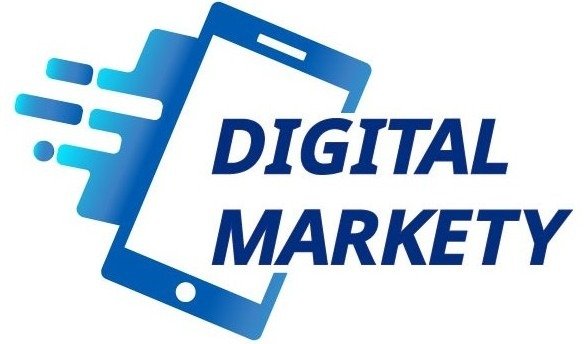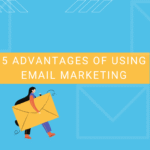
What are the 4 P’s of email marketing?
Introduction to Email Marketing
What are the 4 P’s of email marketing? Email marketing has emerged as one of the most influential digital marketing tools for businesses and brands seeking to connect with their audience effectively. Unlike other forms of marketing, email marketing allows for a direct line of communication between companies and their customers. This personalized approach enhances customer engagement and builds lasting relationships. As brands navigate the digital landscape, email marketing continues to be a vital component for driving conversions and fostering brand loyalty.
Table Of Content
- Introduction to Email Marketing
- Product: What You Are Promoting
- Price: Strategies for Price Presentation
- Place: Where the Product is Available
- Promotion: Crafting the Perfect Message
- Integrating the 4 P’s: A Holistic Approach
- Measuring Success: Key Metrics to Track
- Best Practices for Email Marketing
- Conclusion: Final Thoughts on the 4 P’s
In a world saturated with various marketing channels, email marketing stands out due to its cost-effectiveness and measurable results. Businesses can reach a wide audience at a relatively low cost, making it accessible for companies of all sizes. Furthermore, the ability to segment audiences and tailor messages enables marketers to create highly relevant content that resonates with the recipient. This targeted strategy not only improves open and click-through rates but also significantly enhances the chances of conversion.
The importance of incorporating email strategies in a broader marketing plan cannot be overstated. Email marketing provides businesses with valuable insights into customer preferences and behaviors through analytics. Marketers can track metrics such as open rates, click-through rates, and conversion rates, thereby enabling them to refine their campaigns over time. By understanding how audiences interact with their emails, brands can make informed decisions and optimize their strategies for better performance.
What are the 4 P’s of email marketing? As we delve into the 4 P’s of email marketing—Product, Price, Place, and Promotion—it is essential to understand that a well-executed email marketing strategy can significantly bolster a brand’s ability to communicate effectively with its target audience. In essence, mastering email marketing paves the way for more meaningful interactions and greater business success in today’s competitive landscape.
Product: What You Are Promoting
What are the 4 P’s of email marketing? In the realm of email marketing, the term ‘product’ extends beyond tangible goods; it encompasses a diverse array of offerings including services and digital content. Understanding this broader definition is crucial for marketers aiming to design effective email campaigns. A product can be anything that delivers value to the recipient, whether it’s a physical item like clothing or electronics, a service such as consulting or maintenance, or even digital products including e-books, online courses, and software applications.
When promoting a product through email marketing, it is essential to craft messages that not only inform but also engage the audience. This begins with a clear identification of the unique selling propositions (USPs) of the product being highlighted. For instance, if the product is a fitness app, its USPs may include user-friendly features, personalized workout plans, or integration with wearable technology. Articulating these distinctions will help the audience understand why they should consider the product over competing offerings.
Moreover, utilizing testimonials, case studies, or success stories can greatly enhance the credibility of the product. By showcasing how others have benefited from the offering, marketers can build trust with potential customers. Visual elements such as high-quality images or engaging videos are also instrumental in capturing the interest of recipients. These elements not only make the email more appealing but also serve to illustrate the product in action.
Ultimately, the goal is to create a compelling narrative around the product that resonates with the audience’s needs and desires. By focusing on delivering relevant information in a reader-friendly manner, marketers can significantly improve their email campaign’s effectiveness, leading to higher engagement rates and conversions.
Price: Strategies for Price Presentation
What are the 4 P’s of email marketing? In the realm of email marketing, the ‘Price’ aspect plays a pivotal role in influencing consumer behavior and driving conversions. Effective presentation of pricing can be the difference between a casual observer and a committed buyer. Firstly, utilizing discounts and promotional offers is an established strategy to enhance the attractiveness of a product or service. By highlighting a limited-time offer or a seasonal sale within your email, you create a sense of urgency that can prompt immediate action from recipients.
Another important tactic is the incorporation of clear value propositions, which illustrate the benefits associated with the price being presented. When recipients understand what they stand to gain, whether through cost savings or enhanced product features, they are more likely to internalize the price as a worthwhile investment. Additionally, presenting pricing in a comparative manner can be advantageous. For example, displaying ‘original price’ alongside ‘discounted price’ allows consumers to visualize their savings, reinforcing the value they receive.
Furthermore, the layout and design of the email significantly influence how price information is received. Utilizing visually appealing graphics and easy-to-read fonts can elevate the perceived value of the product or service. It is also important to streamline the decision-making process by including straightforward calls to action (CTAs), directing recipients on how to proceed with their purchase. Integrating payment options and subscription details cater to various consumer preferences, making the purchasing path smoother.
Ultimately, for the price presentation in email marketing to be effective, it must resonate with the target audience’s expectations and needs. By employing strategies that encompass discounts, clear value communication, and streamlined purchasing processes, marketers can enhance their email campaigns and increase conversion rates significantly.
Place: Where the Product is Available
The ‘Place’ element of email marketing refers to the channels and platforms through which customers can access or purchase a product. In this context, it is vital to ensure that email campaigns guide recipients not only to the product but also to the appropriate landing pages where the purchasing process can be completed seamlessly. Email marketing leverages this concept by directing potential customers to specific online environments tailored to enhance their shopping experience.
By linking emails to dedicated landing pages that are well-optimized for conversions, businesses can significantly increase their chances of driving revenue from email campaigns. These landing pages should be designed to complement the email’s content, presenting relevant product information, promotional offers, and straightforward call-to-action buttons. Ensuring a consistent narrative between the email content and the landing page where the customer is directed helps in minimizing friction and encouraging a quicker decision-making process regarding the purchase.
Furthermore, adopting a multi-channel strategy can also amplify the effectiveness of place in email marketing. By utilizing social media platforms, websites, and physical stores in conjunction with well-crafted email content, brands can provide a cohesive experience that meets customers where they are. Whether the promotion is displayed through social advertisements or directly on a retail site, all channels should carry a unified message. This interconnected approach not only enhances brand visibility but also reinforces the pathways by which customers can engage with and acquire products.
Ultimately, the ‘Place’ component in email marketing is pivotal in orchestrating effective customer journeys. By linking emails directly to optimized landing pages and integrating various channels, companies are better positioned to convert leads into loyal customers and boost their overall sales performance.
Promotion: Crafting the Perfect Message
Effective email marketing hinges on the ‘Promotion’ aspect, which involves designing compelling promotional strategies tailored to the target audience. Central to this endeavor is the creation of persuasive subject lines that capture the essence of the email’s content while enticing recipients to click. A subject line should be concise yet impactful, often incorporating personalization or urgency to motivate immediate action. Research has shown that subject lines with 6 to 10 words have proven to yield higher open rates, thus serving as the first critical touchpoint in the promotional process.
Once the subject line has successfully engaged the reader, the body content must further sustain their interest. Employing a conversational and relatable tone can significantly enhance engagement levels. Providing valuable information, such as tips, insights, or special offers ensures that the content not only resonates with the audience but also prompts them to take action. Utilizing bullet points or short paragraphs enhances readability and allows recipients to quickly grasp the main points. Additionally, storytelling can be an effective technique to create a personal connection, making the promotional message memorable.
Equally important is the call-to-action (CTA), which should be clear, compelling, and easy to spot within the email. Whether the goal is to encourage the reader to subscribe to a newsletter, register for an upcoming event, or make a purchase, the CTA should utilize actionable language like “Join now” or “Get your discount today.” Testing different CTA formats, colors, and placements can optimize performance and lead to higher conversion rates.
Different types of promotional emails serve distinct purposes, including newsletters that keep subscribers informed, announcements for new product launches or updates, and event invitations that create buzz around upcoming gatherings. By carefully crafting promotional messages tailored to these various formats, marketers can achieve greater effectiveness in their email campaigns.
Integrating the 4 P’s: A Holistic Approach
What are the 4 P’s of email marketing? In the realm of email marketing, the interconnectedness of the 4 P’s—Product, Price, Place, and Promotion—is paramount for crafting an effective strategy. Each element contributes to a cohesive message that not only engages recipients but also drives conversions. The integration of these P’s ensures that an email campaign resonates with the target audience and fulfills its objectives.
The Product aspect focuses on the offerings that are presented in the email. It is essential to provide detailed information about the product’s features, benefits, and value propositions. By clearly articulating what makes the product unique, marketers can enhance the appeal of the campaign. This clarity helps establish trust and encourages potential customers to take action.
Next is the Price element, which encompasses both the cost of the product and any ongoing promotions. Transparently sharing information about pricing can create a sense of urgency, compelling recipients to take advantage of limited-time offers. By pairing attractive pricing strategies with high-quality content about the product, email marketers can significantly enhance engagement.
The Place component refers to both the distribution channels and the placement of the product within the email. Well-structured emails that direct recipients to the right sales channels can facilitate smoother customer journeys. Furthermore, utilizing effective calls to action can guide subscribers where to go next, ultimately leading to enhanced conversion rates.
Lastly, Promotion is often the driving force behind an email marketing campaign. Engaging promotions that highlight the benefits of the product can enhance the overall message. Utilizing personalized discounts or limited-time offers fosters a sense of exclusivity, which can prompt immediate responses from the audience.
Measuring Success: Key Metrics to Track
Measuring the success of email marketing campaigns is critical for evaluating their effectiveness and optimizing future outreach efforts. Various metrics serve as key performance indicators (KPIs) that provide valuable insights into how well a campaign is performing. Among these, open rates, click-through rates (CTR), conversion rates, and return on investment (ROI) play significant roles.
Open rates reflect the percentage of recipients who open the email. This metric is crucial as it indicates the effectiveness of the subject line and the overall appeal of the email’s content. A higher open rate suggests that your subject lines are engaging and relevant to your audience. On the other hand, low open rates may signal the need for revised tactics to grab attention.
Click-through rates measure the number of recipients who clicked on links within the email compared to the total number of opens. CTR is vital because it evaluates the email’s ability to engage recipients further, leading them to take action. A higher click-through rate indicates that the call-to-action (CTA) resonates well with the audience, while a lower rate may necessitate re-evaluating the email’s layout, content, or CTA wording.
Conversion rates are perhaps the most telling metric, as they indicate the percentage of recipients who completed a desired action, such as making a purchase or signing up for a webinar. This metric directly ties to the campaign’s goals, whether it’s to drive sales, generate leads, or build brand awareness.
Finally, understanding ROI is crucial for measuring the overall effectiveness of email marketing efforts. ROI compares the revenue generated from the campaign against its associated costs, providing a clear picture of the campaign’s profitability.
Best Practices for Email Marketing
Effective email marketing hinges on embracing the four P’s: personalization, precise targeting, performance measurement, and progressive compliance. By integrating best practices within each of these components, marketers can enhance engagement and efficacy in their campaigns.
Firstly, personalization plays a pivotal role in capturing the recipient’s attention. To achieve this, marketers should utilize recipient data to tailor the content of the email specifically to the individual’s preferences and behaviors. This may involve addressing the recipient by their first name, recommending products based on past purchases, or sending targeted promotions during special occasions such as birthdays. Implementing these strategies not only fosters a sense of connection but also significantly increases the chances of conversion.
List segmentation is another crucial aspect. By categorizing subscribers into distinct groups based on characteristics such as demographics, buying behaviors, or engagement levels, marketers can send more relevant content. Segmenting lists allows for heightened engagement rates, as targeted messages resonate more with specific audiences compared to generic outreach. Regularly updating and refining segment criteria ensures that the targeted campaigns remain impactful.
Compliance with regulations, such as the General Data Protection Regulation (GDPR), is essential for maintaining a good relationship with subscribers. Marketers must understand the requirements surrounding consent, data usage, and the right to access personal information. Ensuring compliance not only safeguards against potential penalties but also builds trust with customers, reinforcing their decision to engage with the brand.
Finally, optimizing emails for mobile devices is imperative in the current digital landscape. As numerous consumers access their emails via smartphones and tablets, ensuring that emails are mobile-friendly can enhance user experience. This involves utilizing responsive design, concise messaging, and clear call-to-action buttons to facilitate easy reading and interaction.
Conclusion: Final Thoughts on the 4 P’s
What are the 4 P’s of email marketing? In the realm of email marketing, understanding and effectively implementing the 4 P’s—Product, Price, Place, and Promotion—remains crucial for creating impactful campaigns. Each element plays a significant role in shaping the overall success of your marketing efforts. The Product component emphasizes the importance of highlighting the value and benefits of what you offer, ensuring that your audience recognizes its relevance to their needs. By crafting compelling product narratives, marketers can better engage their prospects and stimulate interest.
The Price aspect should not be overlooked either, as it directly influences customer perception and decision-making. Clear and competitive pricing strategies, combined with any available incentives, can significantly enhance your email marketing effectiveness. This element should be communicated transparently, enabling recipients to understand the value proposition being presented to them.
Moreover, the Place factor underscores the significance of delivering messages through appropriate channels. Optimizing the delivery of your campaigns ensures that they reach the intended audience at the right time, further increasing the likelihood of engagement. Tailoring your approach based on customer preferences and behaviors can lead to improved responsiveness.
Finally, Promotion within email marketing encapsulates the strategies and tactics utilized to encourage conversions. Leveraging attractive offers, personalized content, and persuasive calls to action is essential for motivating readers to engage with your messaging. By continuously testing and refining these promotional tactics, marketers can adapt to ever-evolving customer expectations and preferences.
Ultimately, by diligently applying the 4 P’s of email marketing, businesses can elevate their campaigns, driving higher engagement and achieving tangible results. Commencing with these foundational principles and consistently assessing their effectiveness allows marketers to refine their strategies for the best possible outcomes. Embrace the necessity for ongoing adaptation in this dynamic environment to ensure sustained success in your email marketing endeavors.




Finally a blog that talks about realistic marketing budgets.